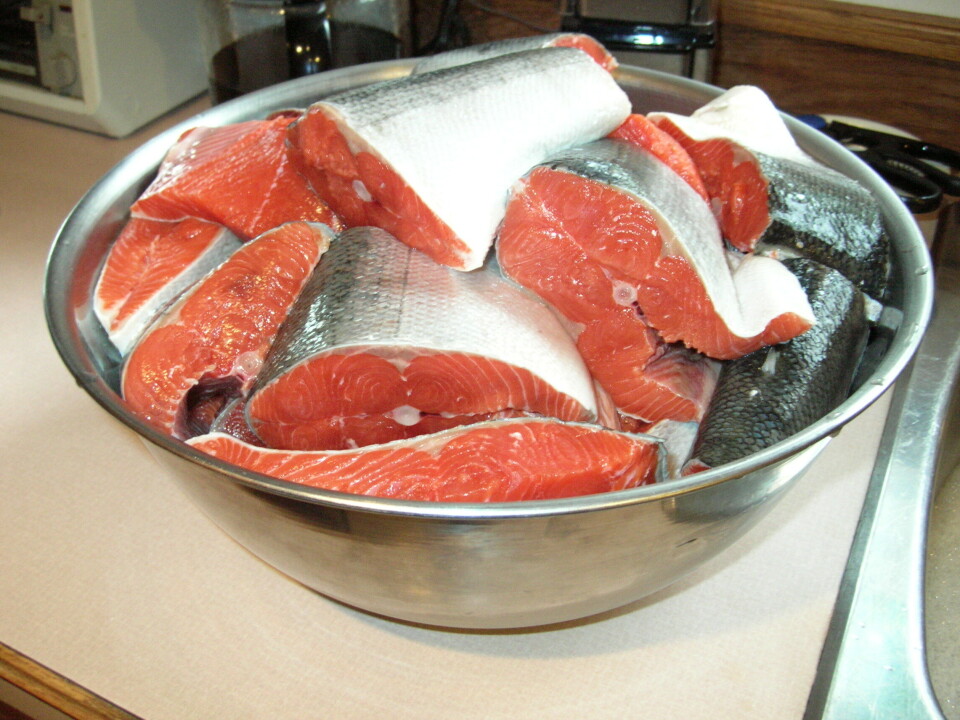
Fear-mongering ripe in the food industry
It is now almost seven years since professor Ronald Hites published his famous paper stating that farmed salmon contained more PCB’s than wild salmon and suggested that people not eat it more than once a month. Since then, a long list of human health experts and government scientists all over the world have dismissed the study and its conclusions as inappropriate fear-mongering. They have concluded that levels of contamination in farmed salmon is far below any maximum amounts established as safe for human consumption, and that the many health benefits from regularly consuming farmed salmon by far outweigh any health risk. Add to that the fact that some wild salmon have been found to contain higher levels of contaminants than farmed salmon (although well below any amounts considered harmful), and one begins to wonder about the motivation behind the massive communication effort put in place to spread the conclusions of Hites and his colleagues.
The US-based Center for Consumer Freedom recently wrote about a similar situation regarding the use of pesticides in agricultural food production;
There’s no shortage of activist groups that make a living breathlessly creating scares about everything from fish to farming to french fries. Usually their tactics, though fundamentally flawed, are subtle enough to avoid scrutiny until the scare has run its course in the media. On the New York Times’ Freakonomics blog, though, James McWilliams reports on some good old-fashioned intimidation tactics being used by the “organic” lobby and its allies:
Earlier this month, 50 environmental organizations got together and demanded that California return a $180,000 (~€ 128,400) federal grant awarded to the Alliance for Food and Farming, an agricultural non-profit based in Watsonville, CA. The AFF received the grant, in its own words, “to correct misconceptions that some produce items contain excessive amounts of pesticide residues.” The protesting organizations — notably the Environmental Working Group and the Organic Consumers Association — claimed that such a mission “strikes a blow” at the organic movement…
At the center of this emerging food fight is a popular pamphlet that the EWG has been publishing for years called the “Shoppers Guide to Pesticides.” In it, the EWG reports results of tests conducted for pesticide traces on 49 fruits and vegetables (conducted by the USDA and FDA). … These are some of the healthiest foods that our good earth yields, but the EWG advises that you “can lower your pesticide consumption by nearly four-fifths by avoiding the 12 most contaminated fruits and vegetables.”
McWilliams does a brilliant job demolishing the spooky pesticide campaign from the Environmental “Worrying” Group (EWG) by pointing to the research of Dr. Bruce Ames, who notes that more than 99 percent of the pesticides we eat are produced naturally by plants. He also points out the difference between mere exposure and actual toxicity:
The USDA’s monitoring of [pesticide] residues finds very, very few cases of over-exposure. In 2007, over 11,000 sample tests detected residue exceeding legal limits in only .4 percent of the cases. Moreover, legal exposure levels are ten times lower than levels known to have negative effects on animals, meaning that even the .4 percent was probably relatively innocuous.
These distinctions are misunderstood by many people who assume that any pesticides on their produce are man-made and harmful, regardless of how microscopic they may be. One recent study found that nearly one-fifth of non-organic produce samples eaten by children contained pesticides. That doesn’t mean, however, that one-fifth of fruits and vegetables contain a high enough dosage to be harmful.
Creating misleading scares about pesticides and other common chemicals is EWG’s modus operandi. The group is notorious for pushing hysterical pseudo-science to the point where it even attacks Vitamin A. No wonder 79 percent of scientists in the Society of Toxicology believe EWG overstates the risk of toxicity from chemicals.
What are some other groups behind the latest attack? They include the Organic Consumers Association and the Center for Food Safety, both of which are partners in the “Keep Nature Natural” campaign—funded by Big Organic. In fact, the stated grievance of EWG and its four dozen co-gripers about the AFF grant is that it “strikes a blow to California’s expanding organic produce industry.”
Organic-only food activist groups are certainly welcome to compete in the marketplace of ideas, just as organic produce is free to compete with the regular kind. But if trying to stifle other points of view is the first tactic they reach for, that says a lot.























































